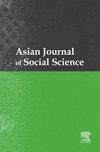Reconstructing gendered subjectivity in translation: Imagological analysis of female representation in Mo Yan’s frog
IF 1.2
4区 社会学
Q2 AREA STUDIES
引用次数: 0
Abstract
How do translators mediate gendered subjectivity in cross-cultural literary translation? This article explores this question by examining the representation of female characters in Mo Yan’s novel Frog and its English translation by Howard Goldblatt. Adopting an imagological approach—integrating literary imagology with translation studies—we analyze how the translator reconstructs the image of Chinese rural women at lexical, hierarchical, and narrative levels. A comparative corpus of 50 key passages was qualitatively coded for lexical substitutions, hierarchical shifts, and narrative emphases introduced in translation. The findings reveal that Goldblatt employs 3 main strategies in translating female subjectivity: lexical sanitization of derogatory or culture-specific terms, hierarchical equalization of gender power relations, and narrative reinforcement of traditional female imagery.These shifts suggest that the translator, influenced by both translatorial habitus and the target culture’s collective imagination, subtly disciplines the portrayal of women.This study’s imagological analysis highlights the translator’s visible role in shaping cultural images, offering a “cultural filter” model for examining how translation can challenge or reinforce prevailing stereotypes. The research contributes to translation studies by demonstrating how feminist subjectivities and cultural perceptions are negotiated in translation, and it provides insights into the potential of literary translation to either subvert or perpetuate Orientalist biases in global literary exchange.
翻译中性别主体性的重构:莫言《青蛙》中女性形象的意象分析
跨文化文学翻译中译者如何调解性别主体性?本文通过考察莫言小说《青蛙》中女性角色的表现及其霍华德·戈德布拉特的英译来探讨这一问题。本文采用意象学的研究方法,将文学意象学与翻译研究相结合,分析了译者如何从词汇、层次和叙事三个层面重构中国农村妇女的形象。对50个关键段落的比较语料库进行了定性编码,用于翻译中引入的词汇替换,等级转换和叙事重点。研究结果表明,戈德布拉特在翻译女性主体性时采用了三种主要策略:贬义或文化特定术语的词汇净化、性别权力关系的等级平等以及传统女性形象的叙事强化。这些变化表明,译者在翻译习惯和译语文化集体想象的双重影响下,对女性形象的塑造进行了微妙的调整。本研究的意象分析强调了译者在塑造文化形象方面的可见作用,为研究翻译如何挑战或强化普遍的刻板印象提供了一个“文化过滤器”模型。该研究通过展示女性主义主体性和文化观念如何在翻译中进行协商,为翻译研究做出了贡献,并为文学翻译在全球文学交流中颠覆或延续东方主义偏见的潜力提供了见解。
本文章由计算机程序翻译,如有差异,请以英文原文为准。
求助全文
约1分钟内获得全文
求助全文
来源期刊

Asian Journal of Social Science
Multiple-
CiteScore
1.20
自引率
0.00%
发文量
53
期刊介绍:
The Asian Journal of Social Science is a principal outlet for scholarly articles on Asian societies published by the Department of Sociology, National University of Singapore. AJSS provides a unique forum for theoretical debates and empirical analyses that move away from narrow disciplinary focus. It is committed to comparative research and articles that speak to cases beyond the traditional concerns of area and single-country studies. AJSS strongly encourages transdisciplinary analysis of contemporary and historical social change in Asia by offering a meeting space for international scholars across the social sciences, including anthropology, cultural studies, economics, geography, history, political science, psychology, and sociology. AJSS also welcomes humanities-oriented articles that speak to pertinent social issues. AJSS publishes internationally peer-reviewed research articles, special thematic issues and shorter symposiums. AJSS also publishes book reviews and review essays, research notes on Asian societies, and short essays of special interest to students of the region.
 求助内容:
求助内容: 应助结果提醒方式:
应助结果提醒方式:


